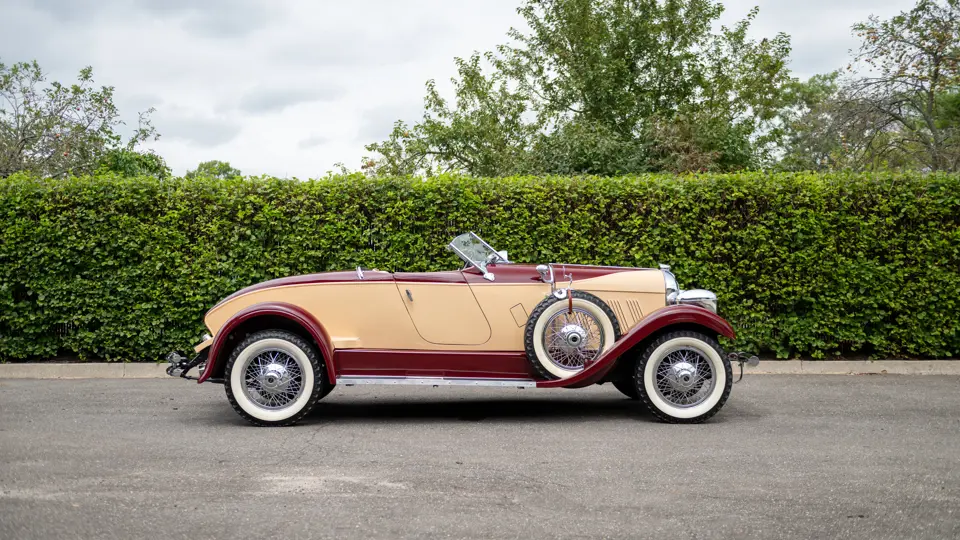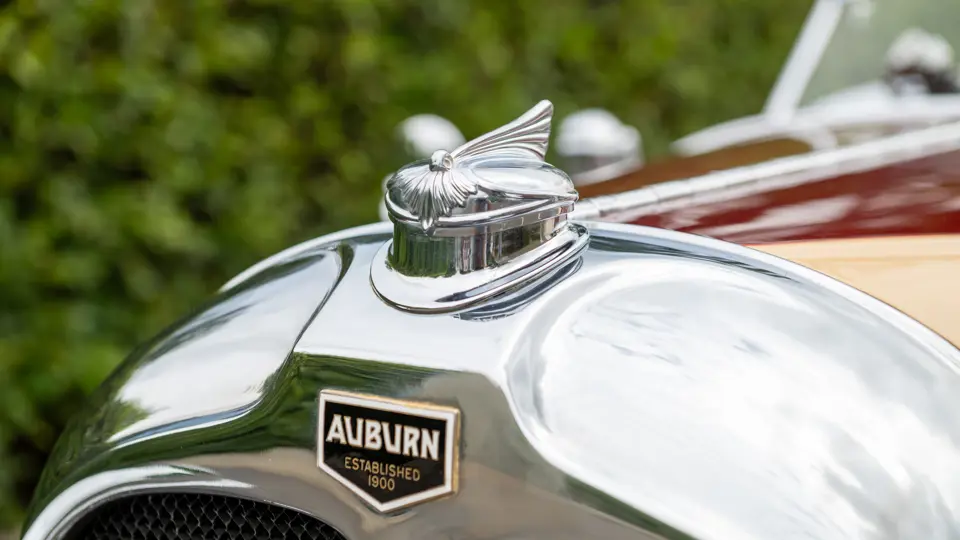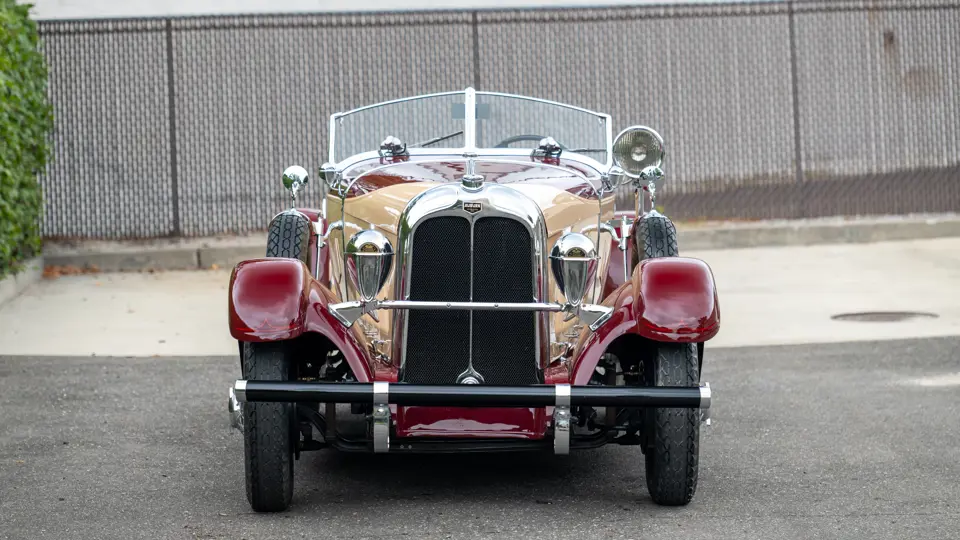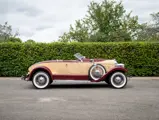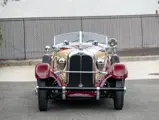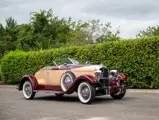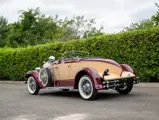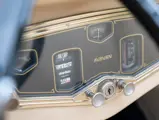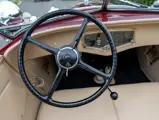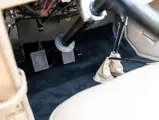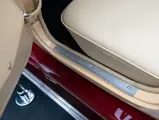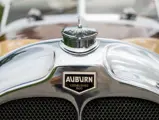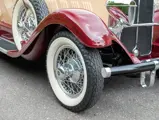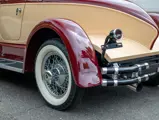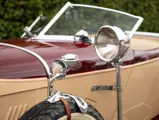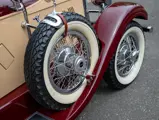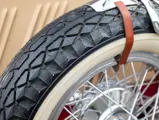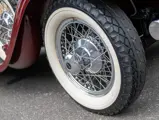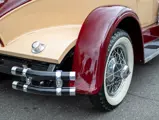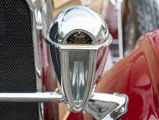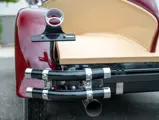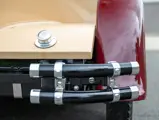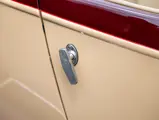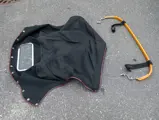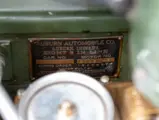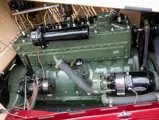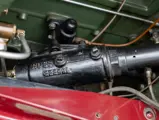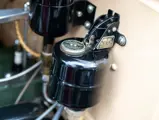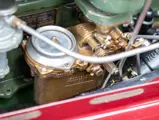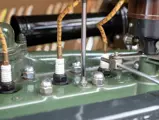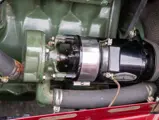
1929 Auburn 8-90 Speedster
{{lr.item.text}}
$129,250 USD | Sold
The Charles J. Noto Collection
{{bidding.lot.reserveStatusFormatted}}
- Offered from The Charles J. Noto Collection
- Restored with bodywork evoking the original speedster design
- Desirably equipped with Woodlite headlamps and cowl lights
- A great little performer and still one of the most beautiful cars of its era
The original Auburn speedster, which was adapted from a Duesenberg show car bodied by McFarlan, was a performance icon that was advertised as “the biggest package in the world for the price.” It became a legend in its own time as it sold for under $1,000 but offered a remarkable top speed of 100 mph, thanks to special chassis and engine modifications unique to this model. Not only did it make everything else look old-fashioned overnight, but it also had an emphasis on open-air performance for two passengers, making it the only true American sports car of its time.
The example offered here, the 8-90 or “Little Eight” model of 1929, is believed to have been restored in the late 1980s or early 1990s, with steel speedster bodywork evoking the original design, including its striking two-tone paint treatment in maroon and ivory. At one time offered by Oliver Classics of New York, it was later acquired by Charles J. Noto, who had admired the Auburn speedsters for many years and sought to add a fine, driver-quality example to his own collection. It has remained part of his stable since, displayed in his private showroom.
Today the restoration remains in very nice overall condition, with light age and wear visible to its finishes, engine compartment, and undercarriage, and at the time of cataloguing had recorded 64,130 miles. It is desirably outfitted with side-mounted mirrors and a spotlight mounted on the running board, as well as Woodlite headlamps and cowl lights, popular accessories of the period for sporting cars. The principle of the unusual Woodlite design was that they would focus a narrow, intense beam of energy on the road ahead, rather than spreading it across the road like a conventional headlamp. Their efficacy is a matter of debate, but they look terrific, especially against designer Alan Leamy’s remarkable Auburn speedster.
This would be a most enjoyable car for Antique Automobile Club of America or Auburn Cord Duesenberg Club events and is sure to attract as much attention on modern roads as it would have in 1929—perhaps even more so.




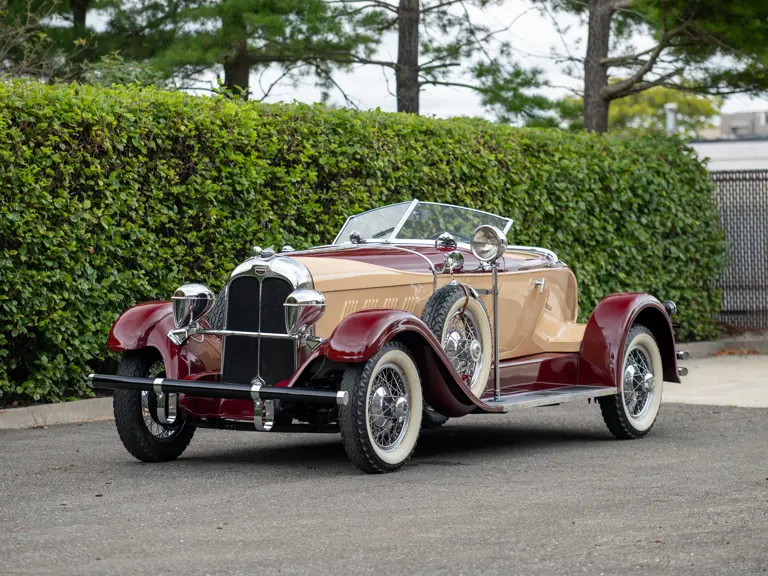
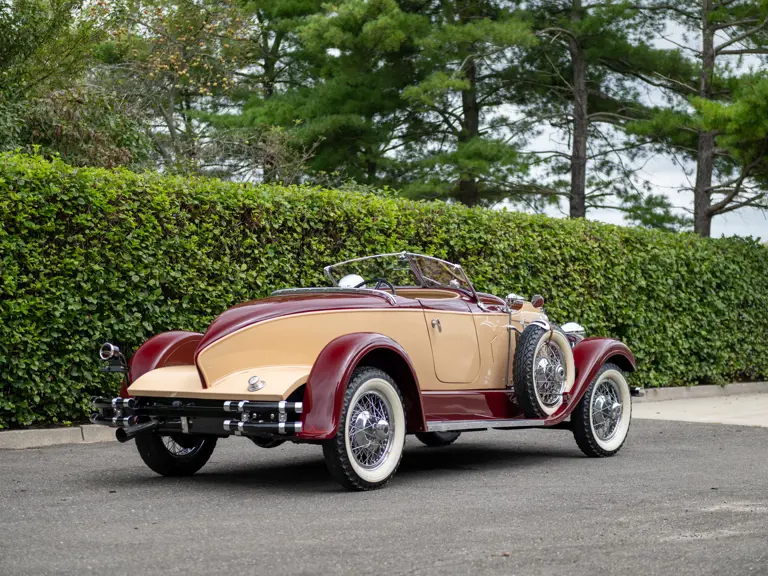

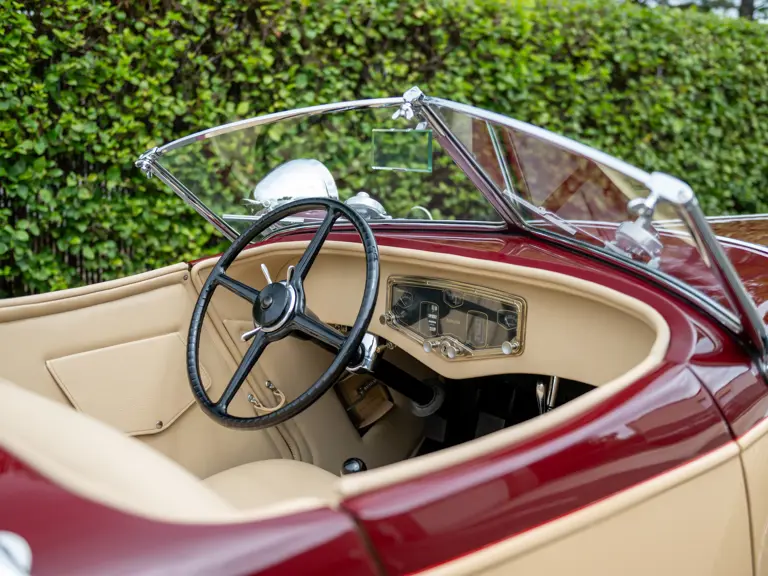
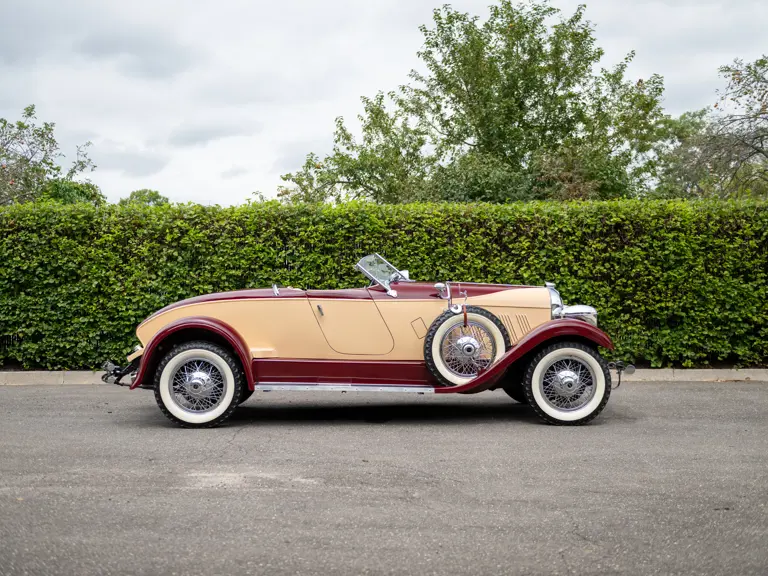
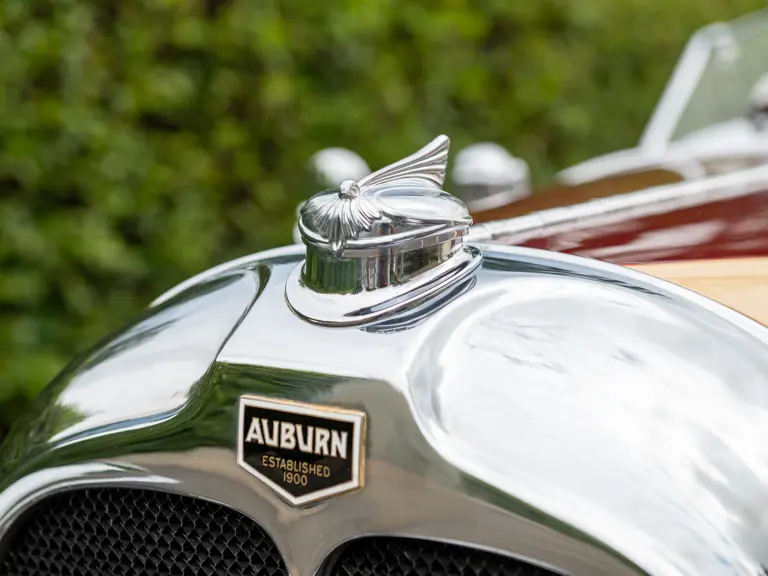

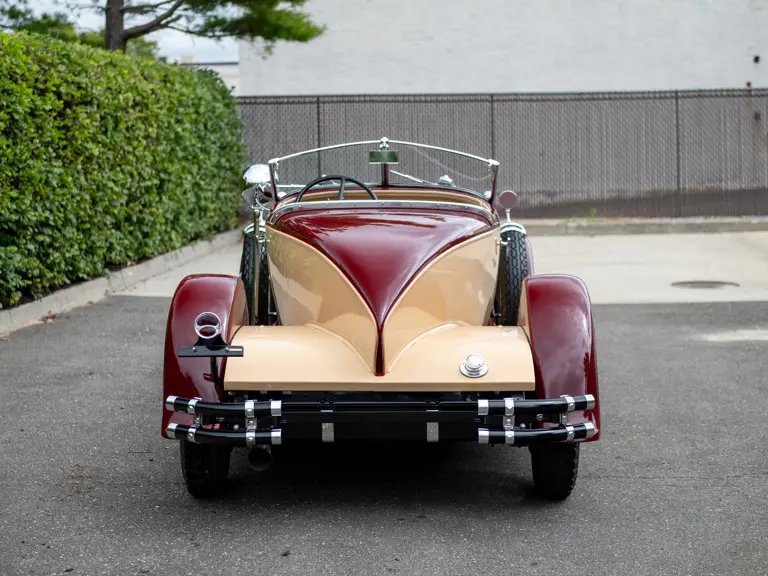

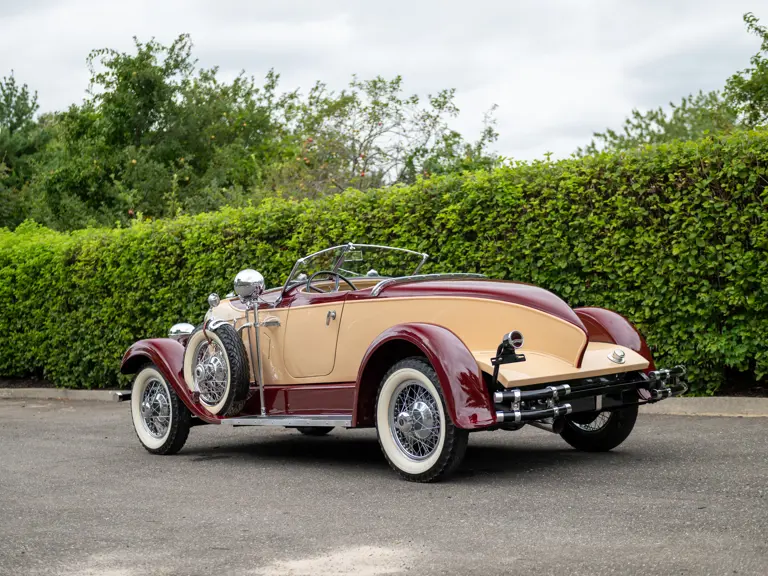
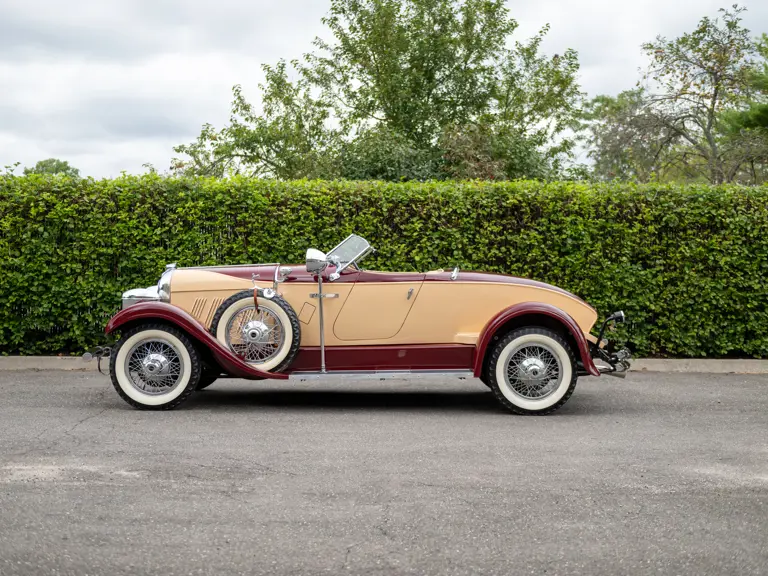


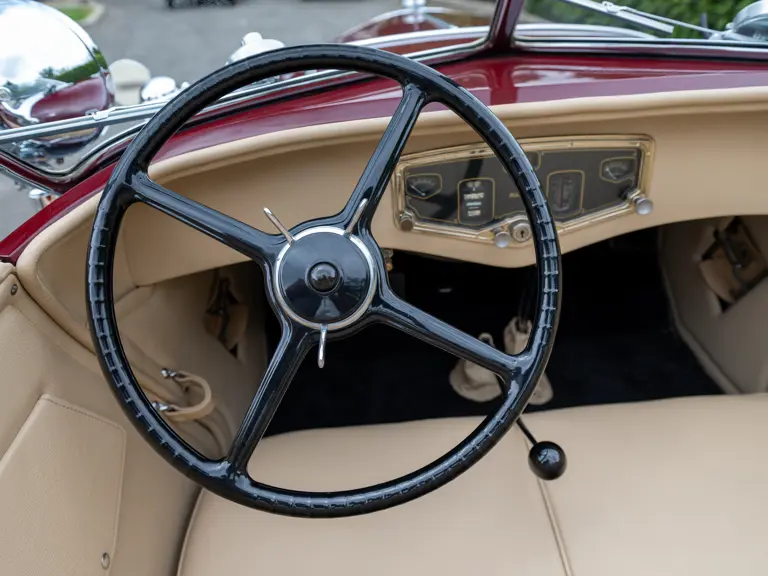
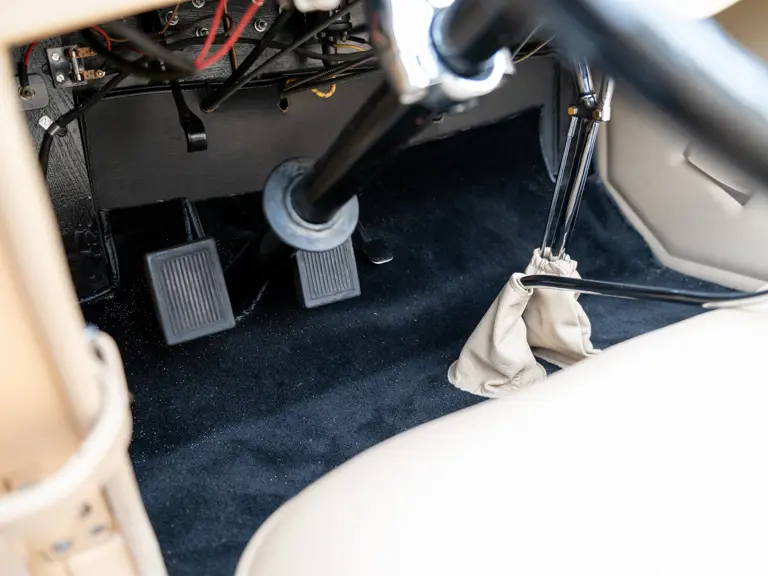
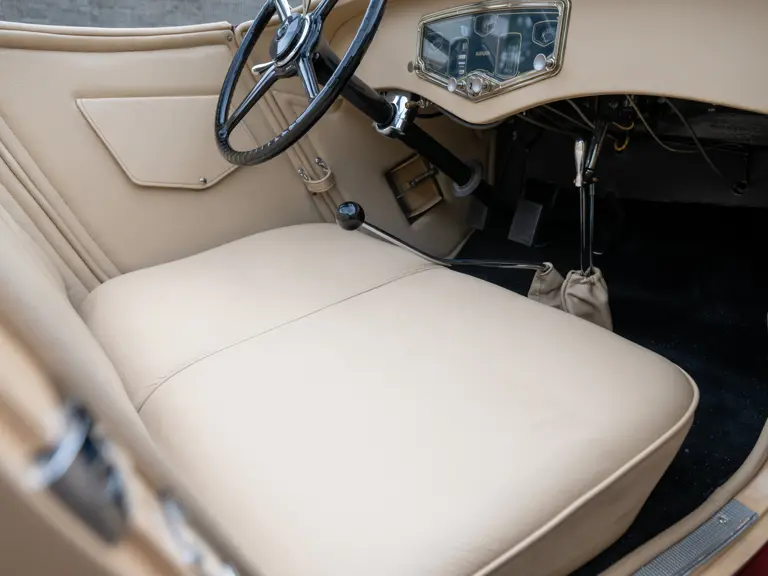
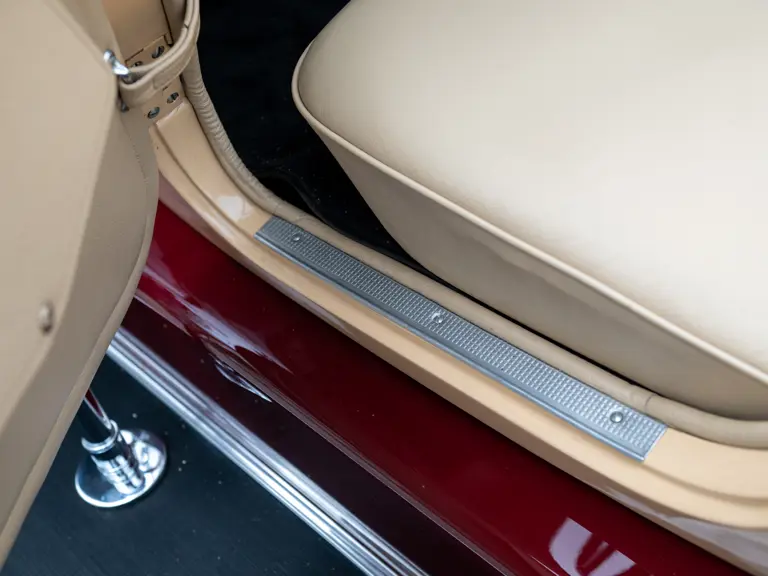

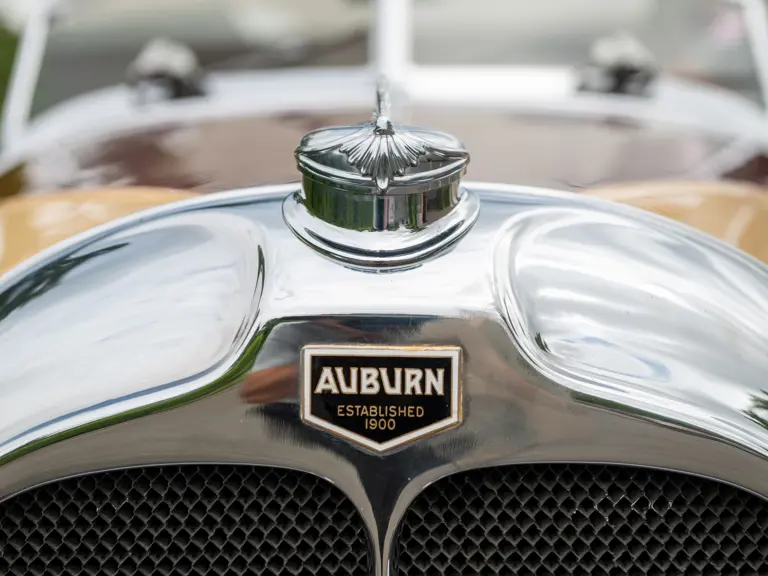
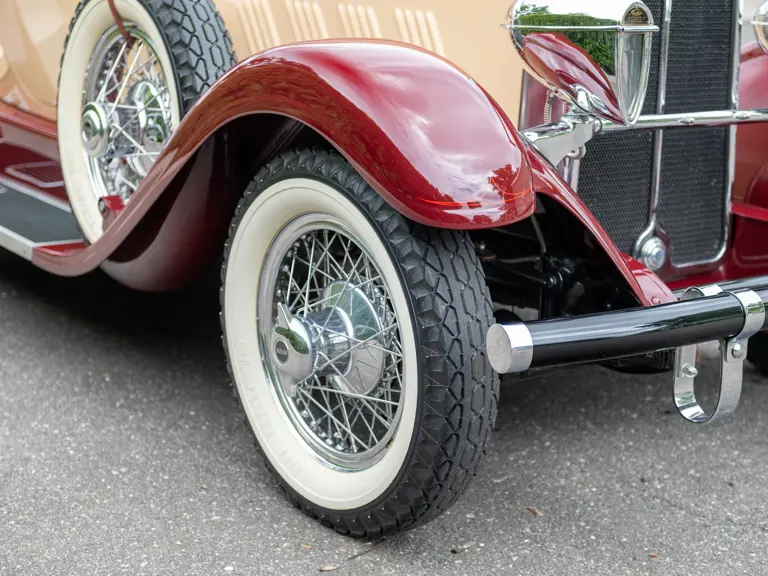

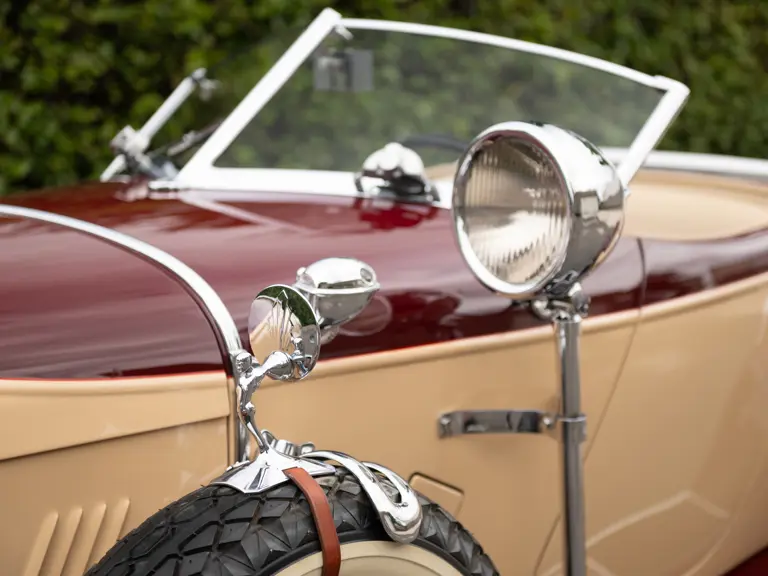

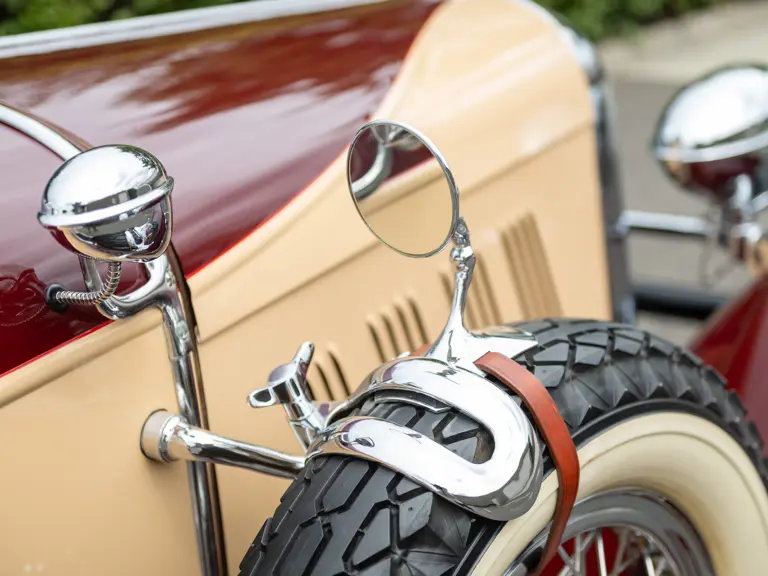
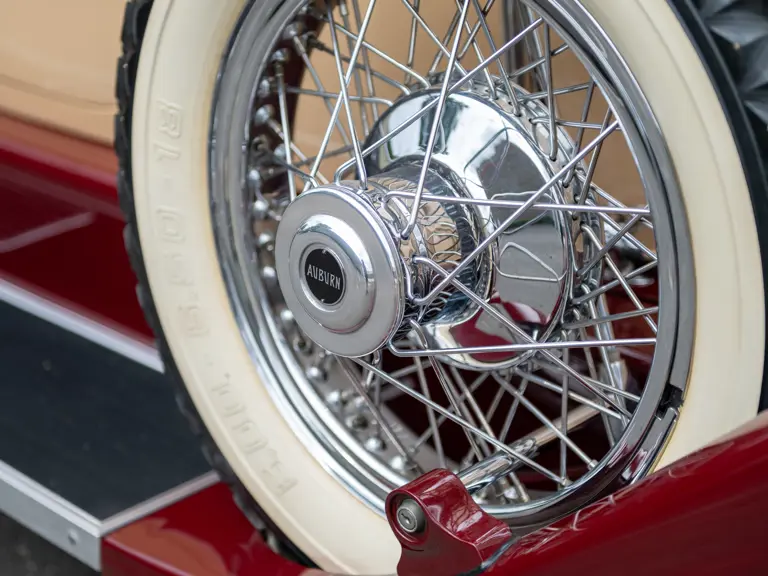
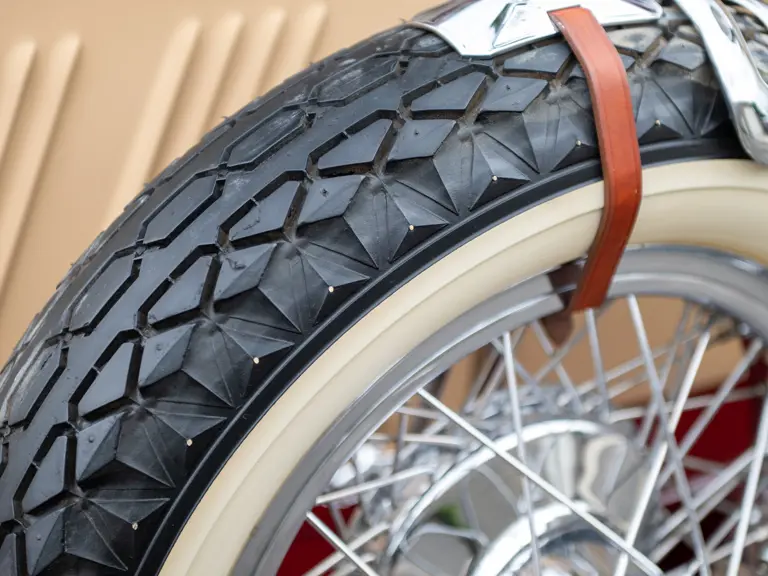

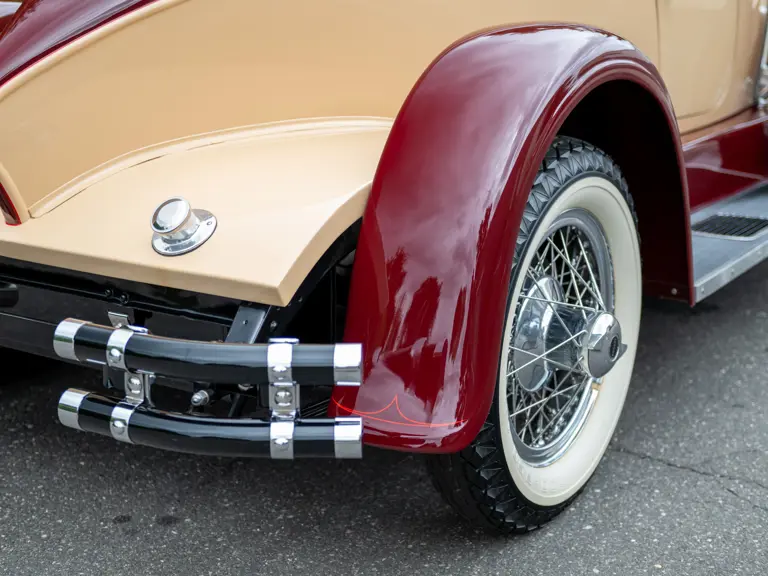

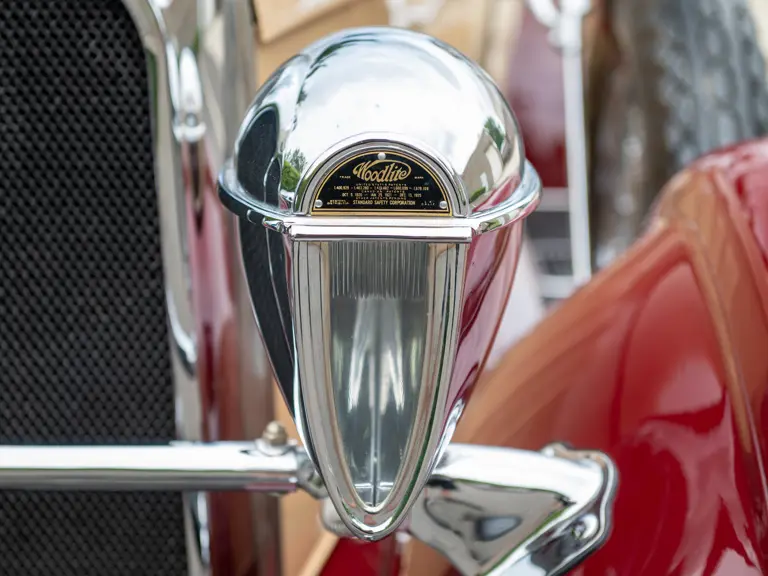

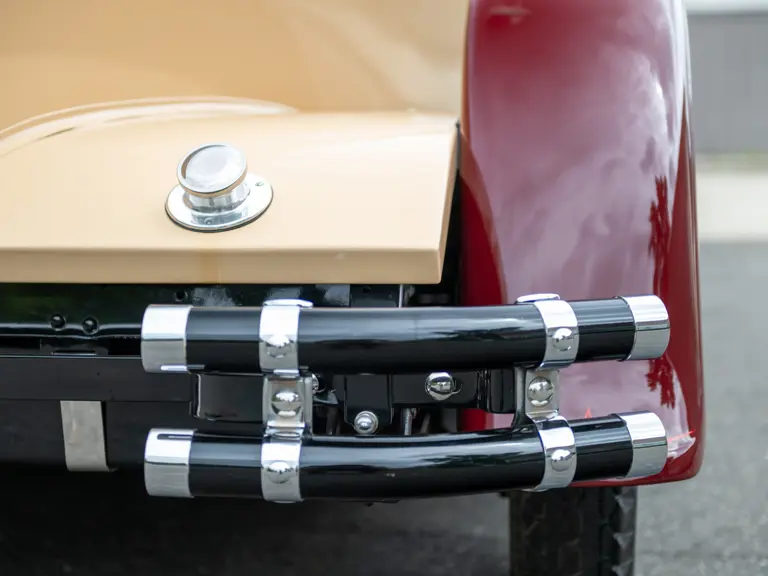

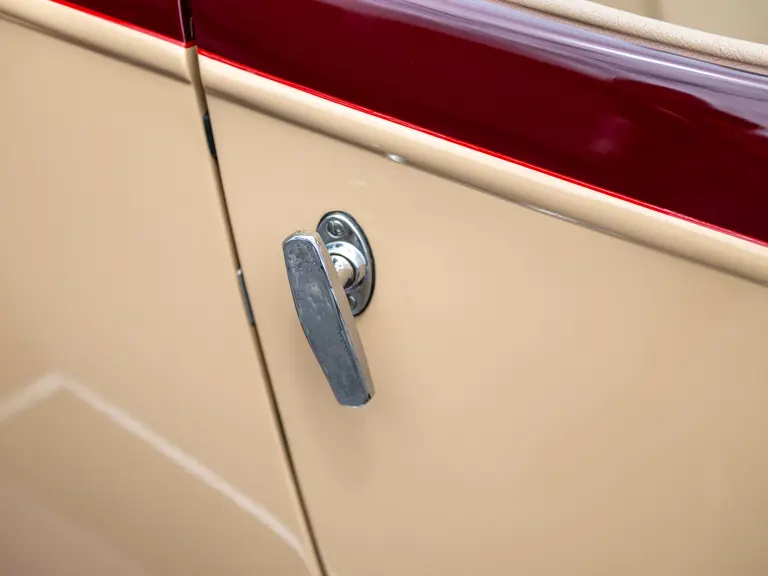
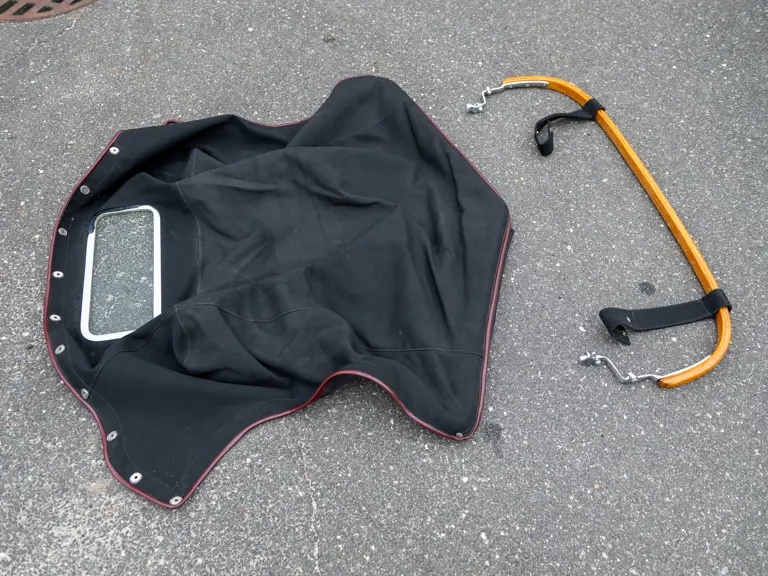
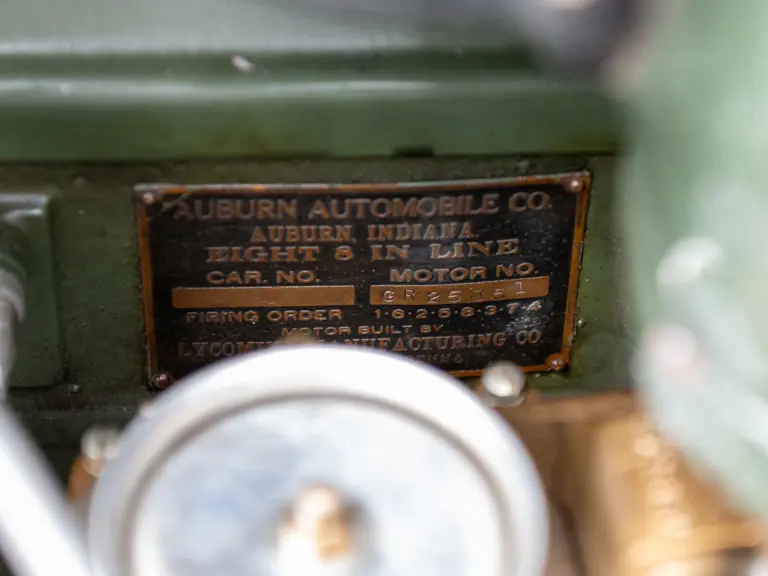
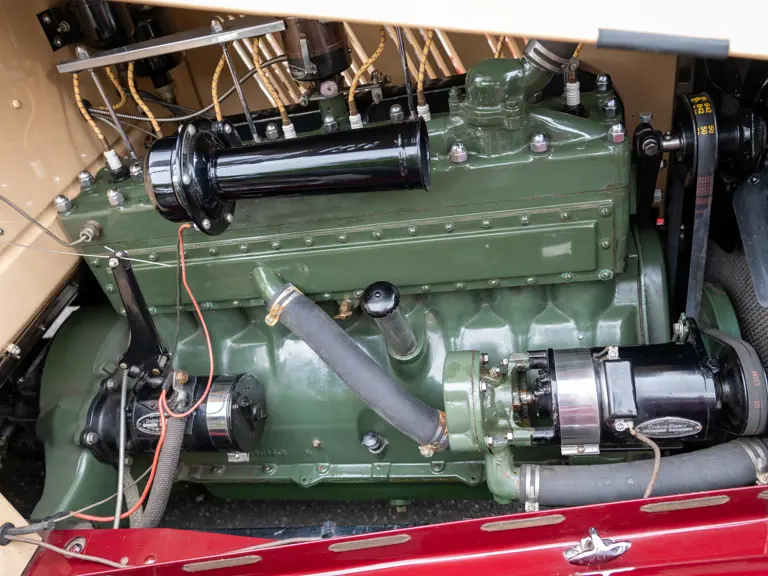
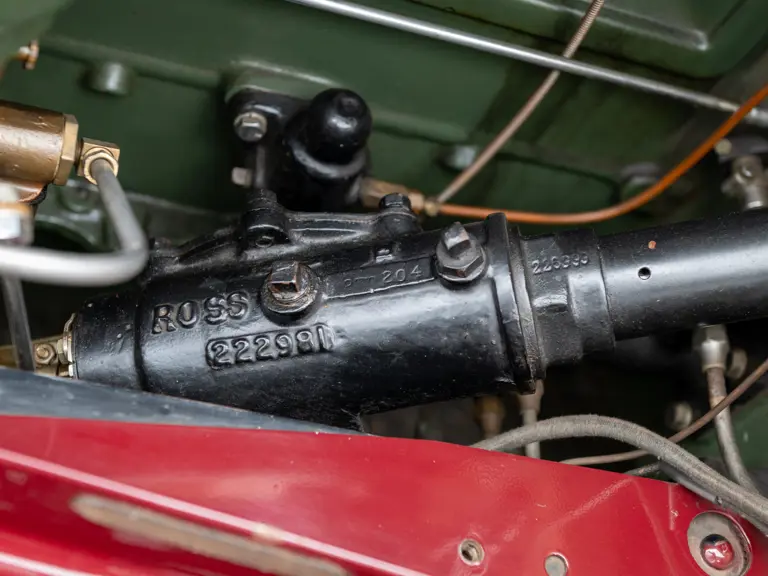
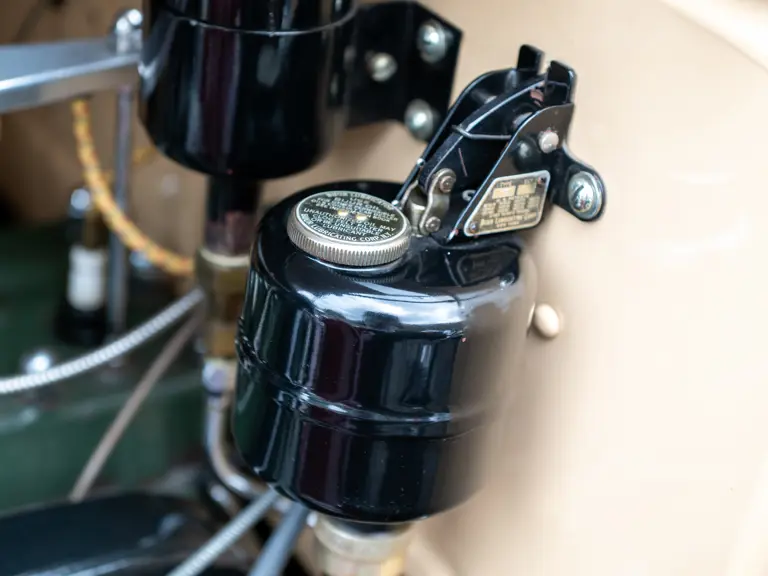

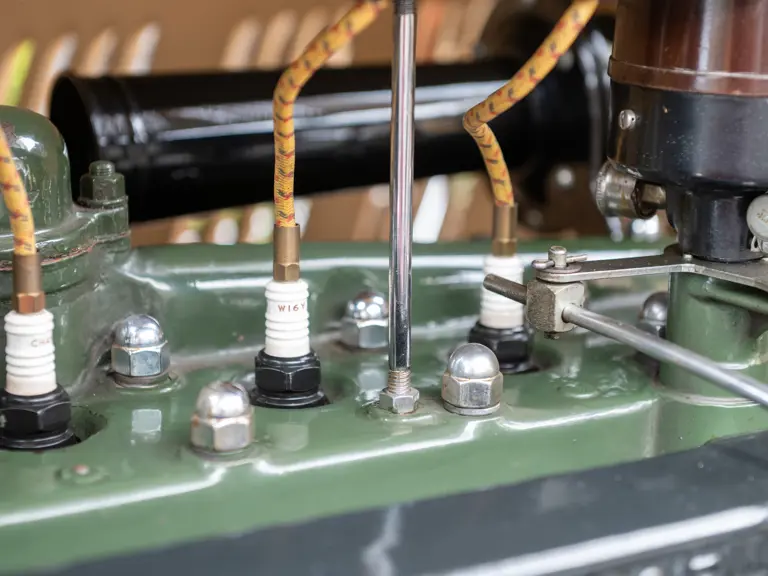
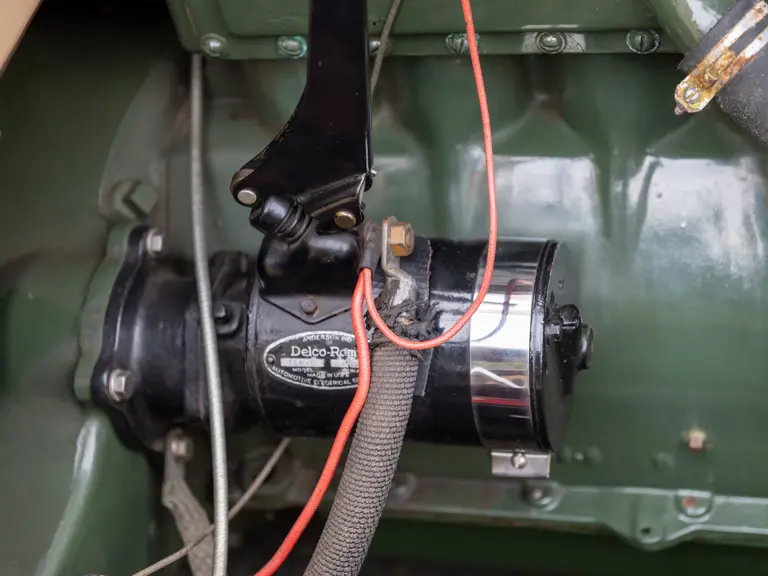
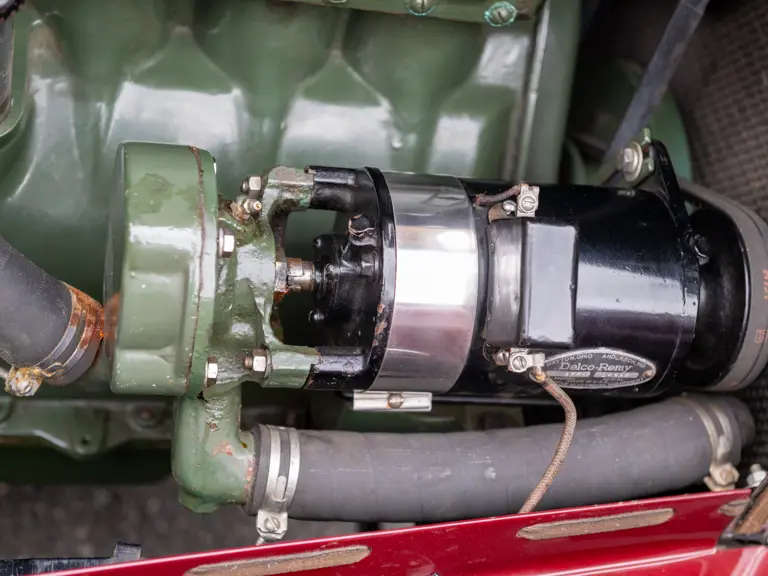
 | Hershey, Pennsylvania
| Hershey, Pennsylvania
